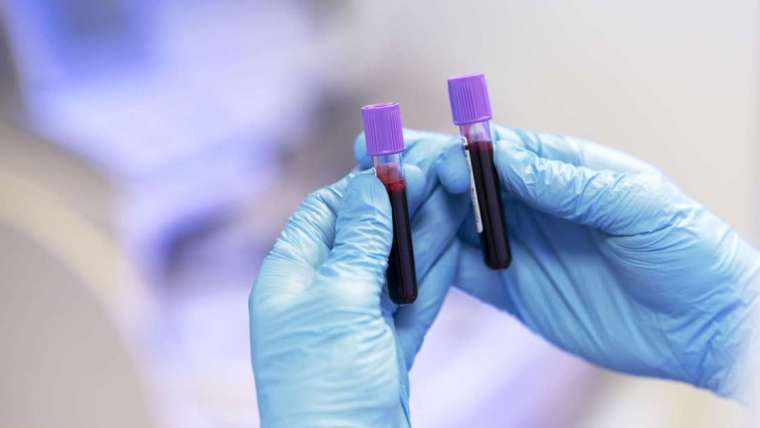
Understanding Body Composition Analysis: Why It Matters for Your Health
Last updated: April 2025 | Medically reviewed content
When you step on a bathroom scale, you see a single number, but that number doesn’t tell you much about what’s actually going on inside your body. For example, weight alone can’t show how much of your body is made up of muscle versus fat, or how much fat is stored around your organs. This is where body composition analysis becomes invaluable. It’s not just for athletes or fitness enthusiasts – understanding your body composition can impact your daily life in meaningful ways. Whether you’re struggling with energy levels, trying to lose weight, managing a chronic condition like diabetes, or simply aiming to feel healthier, knowing the breakdown of your fat, muscle, and bone mass can give you the clarity you need to make better decisions about your health.
Imagine feeling more energized because you’ve gained muscle, or being able to manage your blood sugar levels more effectively because you’ve reduced visceral fat, the fat stored around your organs. Body composition analysis gives you a clearer picture of how your diet, exercise, and lifestyle changes are truly affecting your health – beyond the limitations of just weight. This method helps identify areas of improvement that might not be visible on a scale but can dramatically influence your well-being, such as reducing the risk of heart disease or improving mobility. By understanding what makes up your weight, you can make more informed, confident decisions that lead to lasting health improvements.
Why Is Body Composition Important?
Understanding your body composition is key to assessing your overall health. While weight alone can fluctuate due to various factors, such as fluid retention, body composition assessment focuses on the ratio of fat and muscle in your body. This breakdown is much more meaningful because it reflects your actual health status, including your risk for chronic diseases like heart disease, diabetes, and obesity. Whether you’re trying to lose weight, gain muscle, or just maintain a healthy body, knowing your body composition can guide you in the right direction.
Additionally, body composition assessment helps track changes over time. While your weight might stay the same, an increase in muscle mass or a decrease in fat can be a major win, even if the scale doesn’t budge much. It also helps identify areas that need improvement, such as high levels of visceral fat (fat around internal organs), which is associated with a higher risk of cardiovascular disease.
How Do We Measure Body Composition?
There are several methods available for body composition analysis, each with its own set of benefits. Here are some of the most common ones:
1. Bioimpedance Analysis (BIA)
BIA is a quick, non-invasive method that uses a small electrical current to measure the resistance as it travels through the body. This data helps estimate body fat percentage, muscle mass, and visceral fat levels. The test is quick and easy, offering a breakdown of body composition in specific areas such as limbs and torso. It’s clinically useful in managing conditions like diabetes, cardiac care, and obesity. Our clinic uses a hospital-grade SECA BIA machine for precise results.
2. DXA/DEXA Scan
The DXA scan uses low-dose X-rays to measure bone density, fat tissue, and muscle mass. Historically, DXA has been one of the most accurate tools for body composition analysis. However, recent advances in BIA technology now offer similar accuracy without the exposure to radiation. Additionally, DXA scans don’t measure visceral fat, which is a crucial indicator of metabolic health. Studies have shown that DXA and BIA produce comparable results, making BIA a more accessible and safer option for routine assessments.
3. Skinfold Test
The skinfold test is one of the oldest methods for estimating body fat percentage. A caliper is used to pinch the skin at specific body sites, measuring the thickness of the skinfolds. This method assumes that fat is evenly distributed across the body, which isn’t always the case. It’s also highly dependent on the skill of the person administering the test, leading to potential user error. Plus, having your skin pinched isn’t always the most comfortable experience.
4. Hydrostatic Weighing
This method involves submerging the body underwater while sitting on a scale. By comparing your weight on land to your underwater weight, the test estimates body fat percentage. While this method is precise, it requires specialized equipment and does not assess visceral fat. It’s also more involved than simpler methods like BIA.
5. Quantitative MRI (Q-MRI)
MRI scans can be used for body composition analysis by assessing fat and muscle mass. However, these tests are costly, require specialized facilities, and aren’t typically used in outpatient clinical settings. While they can offer highly detailed data, their expense and accessibility limit their widespread use.
How Can Body Composition Analysis Help You?
At our clinic, we use body composition analysis as part of various health and wellness programs. Whether you’re working on weight loss, managing cardiometabolic health, monitoring diabetes, or tracking the benefits of hormone replacement therapy, body composition analysis provides valuable insights. It allows us to assess your progress beyond the scale, giving you a clearer understanding of how your body is responding to lifestyle changes.
Are You Ready to Take Control of Your Health?
Body composition analysis is a powerful tool that helps you make more informed decisions about your health and fitness. If you’re interested in learning more or would like to schedule a body composition analysis at our clinic, please contact us today. Dr. Hina Zaman and our team are here to guide you toward a healthier future with personalized care and expert insights.
Useful Resources:
-
American Council on Exercise (ACE) – Body Composition
Learn more about the different methods for measuring body composition, including BIA and DXA.
https://www.acefitness.org -
National Institutes of Health (NIH) – Body Composition
Comprehensive overview of body composition and its role in health and disease management.
https://www.nih.gov -
The American College of Sports Medicine (ACSM) – Body Composition Assessment
Guidelines and recommendations for measuring body fat and lean mass.
https://www.acsm.org -
Journal of Clinical Endocrinology & Metabolism – DXA and Body Composition
Research article on the accuracy of DXA in measuring body composition compared to other methods.
https://academic.oup.com/jcem -
Centers for Disease Control and Prevention (CDC) – BMI vs. Body Composition
Compare the differences between BMI and body composition for better health management.
https://www.cdc.gov -
SECA – Bioimpedance Analysis Devices
Manufacturer of hospital-grade BIA machines and their applications in clinical settings.
https://www.seca.com



